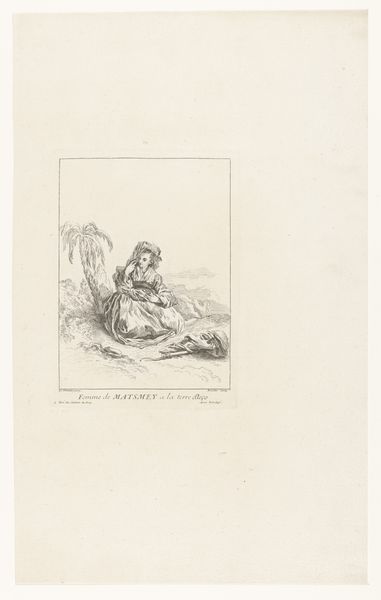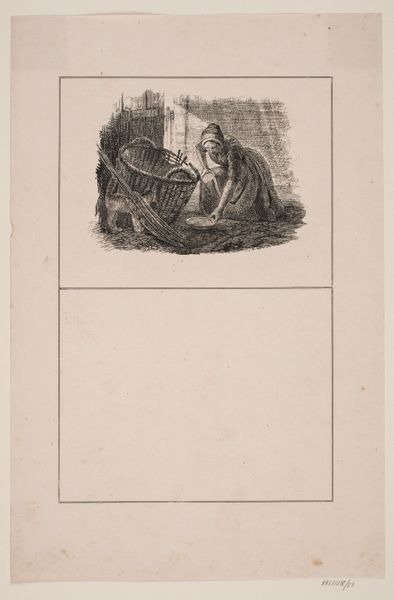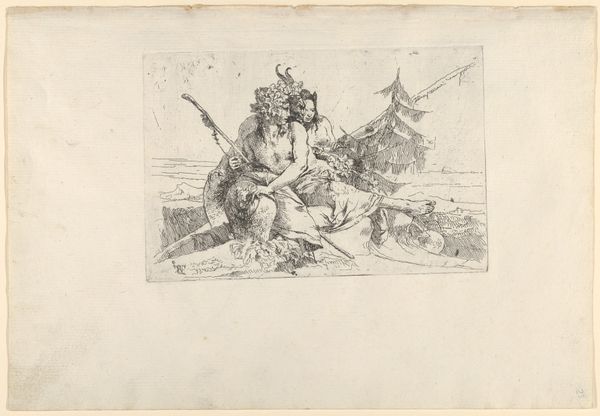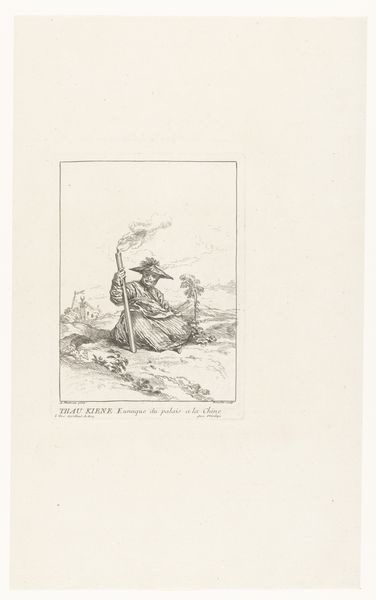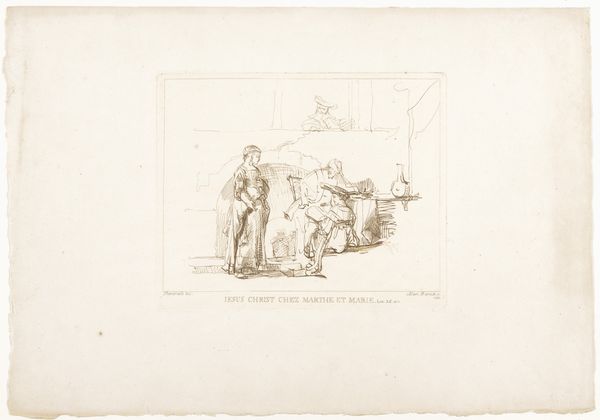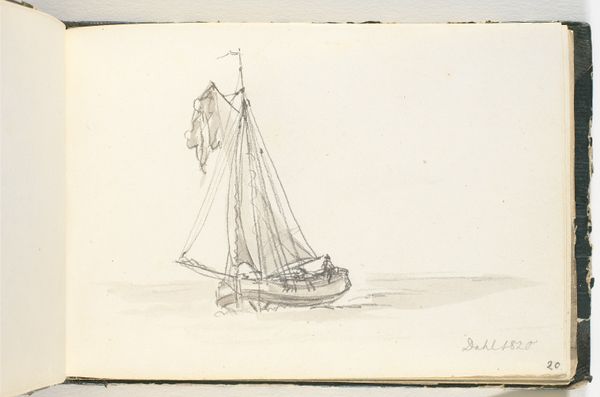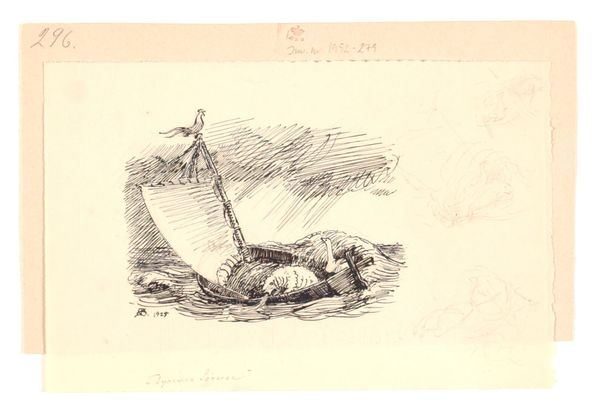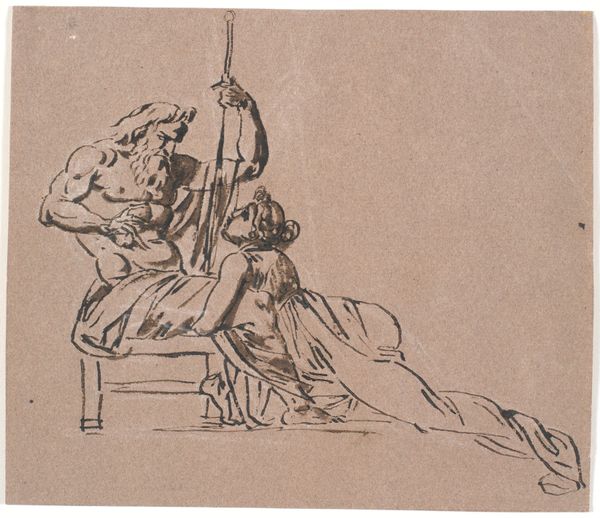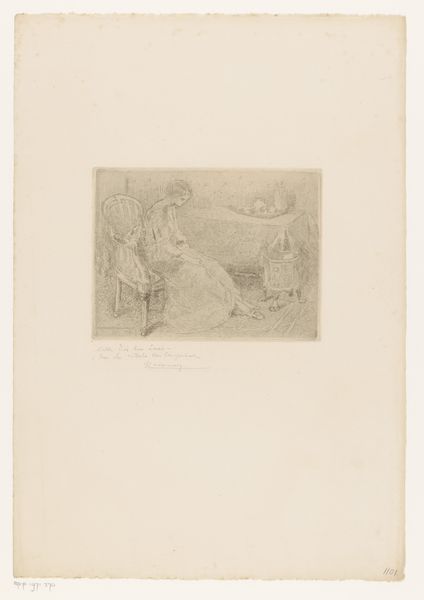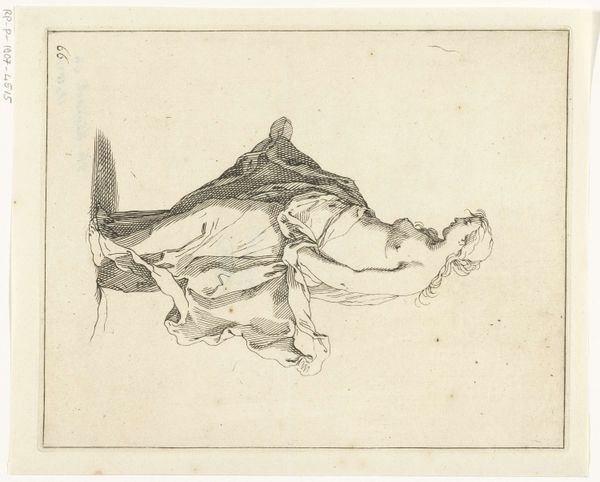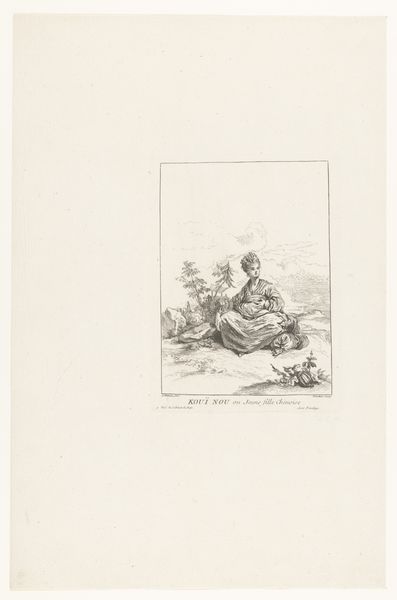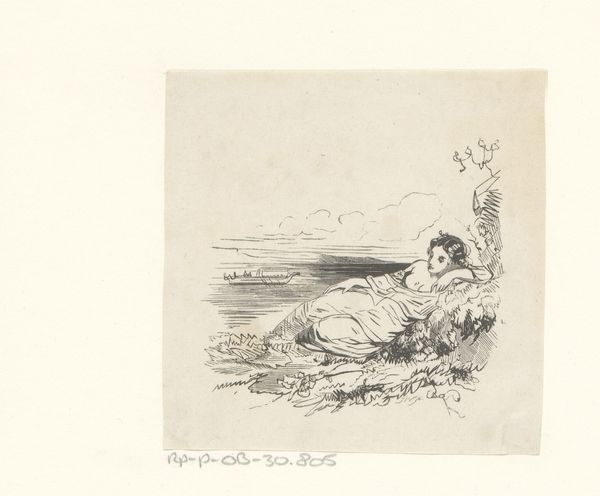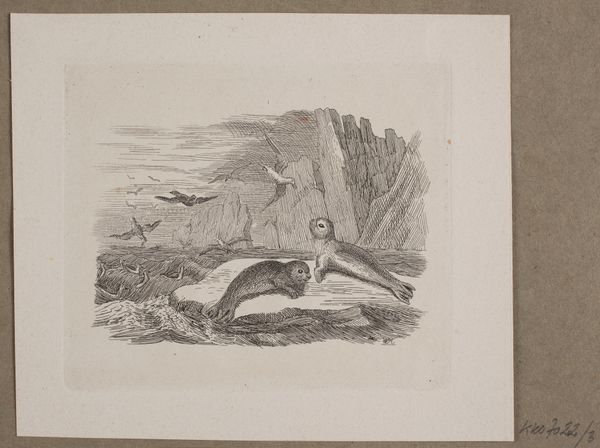
drawing, paper, ink
#
drawing
#
ink drawing
#
landscape
#
figuration
#
paper
#
ink
#
academic-art
Dimensions: 156 mm (height) x 205 mm (width) (bladmaal)
Editor: Here we have Nicolai Abildgaard’s ink drawing on paper, “Oceanet, en liggende havgud,” created sometime between 1743 and 1809. I’m struck by how languid this god of the sea appears. What does this say about the cultural role of classical imagery during this period? Curator: That's a keen observation. Considering the era in which Abildgaard was working, the late 18th and early 19th centuries, we're amidst a revival of classical ideals deeply intertwined with Neoclassicism and the Enlightenment. This reclining figure, this Oceanus, embodies a controlled, idealized form harking back to the sculptures unearthed at Herculaneum and Pompeii. But isn't there a certain ambiguity here? What do you make of the setting, the watery realm depicted? Editor: It feels almost…minimalist, the waves rendered with just a few strokes of ink. It almost undermines the power one would expect from a sea deity. Was Abildgaard intentionally downplaying the overtly heroic depiction of figures like this? Curator: Precisely. We must consider how institutions such as the Danish Royal Academy, where Abildgaard taught, influenced artistic production. They championed academic art, of course, with emphasis on proper form. However, the era was also beginning to grapple with revolutionary ideals, challenging traditional hierarchies. Could this be Abildgaard subtly commenting on the decline of traditional power? Editor: So, a relaxed sea god could, perhaps, reflect a changing socio-political landscape? Curator: Exactly! It asks us to examine who had access to art, and what kind of messages were subtly – or not so subtly – being woven into it. How were artists grappling with changing political and social norms? Who was art serving? Editor: That's a totally different perspective than just admiring the aesthetic qualities. Thank you. I will definitely carry those considerations when I approach art from that time period. Curator: And I’m left wondering about the accessibility of these types of works; considering Abildgaard's background really gave insight into the intended public role of the artwork.
Comments
No comments
Be the first to comment and join the conversation on the ultimate creative platform.

